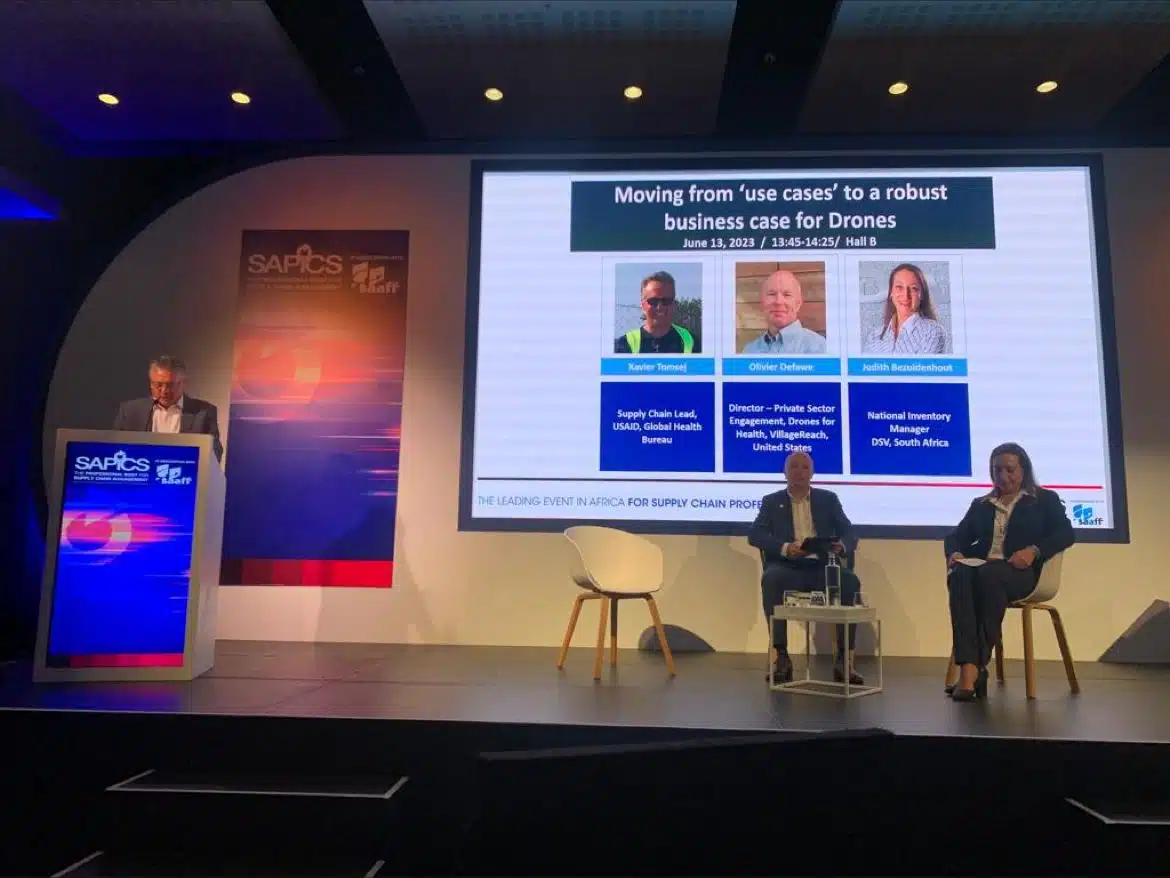
Sometimes we need to look outside the box to bring health items to individuals when and where they need them.
Perhaps it would be more accurate to argue that we must innovate, particularly by using drones, in order to think outside the box. VillageReach’s strategy for transforming health care delivery in Africa involves integrating drones into public health supply chains.
But there are still issues: How can we improve the efficiency and affordability of drone logistics? Could drones change the economics, design, and business models of the supply chain?
These are some of the inquiries we made during a panel at the most recent SAPICS conference, which placed a focus on health and the provision of healthcare. The conference this year took place from June 11 to June 14 in Cape Town, South Africa was the first conference to include a public health supply chain track, giving development agencies, donor organizations, and non-governmental organizations (NGOs) the opportunity to explore strategies with private sector supply chain partners in order to achieve Agenda 2030 and universal health coverage.
Drones are changing the way we view transportation.
During the panel titled “Moving from ‘use cases’ to a robust business case for drones,” I had the opportunity to talk about methods to transform healthcare delivery and present a case for drones in health.
Drones were originally considered to be the technology of the future, yet it is still unclear how they might affect supply chain management. The way we think about warehouse location and level skipping, re-supply frequency, end-to-end data visibility, and many other things are suddenly being disrupted.
Even the way we think about how to deliver healthcare is being altered by drones. Over the past ten years, VillageReach has used drones to increase the last-mile delivery of life-saving medical supplies. With the help of our Drones for Health solution, we have the concept of “fit for purpose mode of transportation,” which states that drones don’t necessarily replace existing modes of transportation but rather augment them, was tested, deployed, and scaled in drone logistics.
Through the UAV for Payload Delivery Working Group (UPDWG), VillageReach and a small number of other participants have helped to develop proof of the advantages of drone logistics on supply chain performance and the health system as a whole. Most recently, the baseline of the first randomised control trial (RCT) on how drones effect health outcomes in Malawi was completed by VillageReach, IDinsight, and INSEAD in collaboration with Swoop Aero.
We have a thorough understanding of the “know-how” to integrate drone logistics into an existing supply chain as well as the actual cost of running sustainably and scaling a drone transport network thanks to the installation of seven drone transport networks across five different nations.
Taking on Challenges with a Change in Mentality
To improve and expand drone transport in Africa, we must still solve concerns with cost-effectiveness and demand.
Despite the fact that there is a need for drone technology, the market is fragmented because the drone business is still growing in isolation across many industries. This is not the best scenario for creating a transport system that can accommodate the quantity of products that must be transported.
We must combine this demand, create business plans, and set prices that will make this revolutionary answer affordable and long-lasting.
A mentality adjustment is also required to overcome the high initial cost of this still-emerging technology. Drones should not be viewed as a panacea for all issues.
A HOPEFUL FUTURE
I’m hoping that business leaders from all industries will take the time to consider how and where drone logistics might be able to add new revenue streams to their current operations, assist in the market expansion of an existing business, or even help them start a new company now that evidence of the advantages of drone logistics is becoming more widely available.
Drones may be able to close the equity gap in health care access that we saw during the global pandemic in the public health sector. We can make sure that wherever drones are used, local health needs are identified and communities are engaged in order to better understand the context of drone use.








